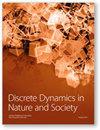A Comparative Study between Time Series and Machine Learning Technique to Predict Dengue Fever in Dhaka City
IF 1.2
4区 数学
Q3 MATHEMATICS, INTERDISCIPLINARY APPLICATIONS
引用次数: 0
Abstract
The dengue virus is the most dangerous one that mosquitoes may spread to people. Despite attempts by the government, dengue outbreaks are becoming increasingly common in Bangladesh. Interventions in public health rely heavily on KAP (knowledge, attitude, and practice) studies. The primary goal of this research is to forecast the occurrence of dengue disease in the city of Dhaka using methods from machine learning and time series analysis and then to compare the models in order to find the one with the lowest MAPE. From January 2016 through July 2021, monthly data were retrieved for this study from WHO and the Directorate General of Health and Services (DGHS). According to the findings of this research, neural networks outperform time series analysis when it comes to making predictions. The best-fitted neural network (NN) model was found in model 04 with 05 hidden layers which produced the minimum error model with the value of error 0.003032557, and the values of RMSE and MAPE are 7.588889e − 06 and 1.15273, respectively, for the prediction of the dengue fever in Dhaka city. In contrast, the original dengue data in the time series analysis is not stationary. Take the difference and run the unit root test by the augmented Dickey–Fuller (ADF) test to make it stationary. The dengue data series is stationary at the first-order difference, as evidenced by the ACF and PACF, which show no noticeable spike in the first-order difference. The ARIMA (6, 1, 1) model with the lowest AIC = −251.8, RMSE = 0.0310797, and MAPE = 15.2892 is the best choice model for predicting the dengue death rate. Therefore, from these two models, the NN model gives better prediction performance with the lowest value of MAPE. So, the neural network gives better prediction performance than time series analysis. The NN model forecasted 12-month death rates of dengue fever that suggest the death rate in dengue fever falling month by month. This study is more innovative than any other research because this research approach is different from any other research approach. The model selection criteria are based on the most effective performance metrics MAPE, indicating the lowest error and better prediction performance. Therefore, from this research, the author suggests machine learning gives better prediction performance than time series analysis for any other prediction performance.预测达卡市登革热的时间序列与机器学习技术比较研究
登革热病毒是蚊子可能传播给人类的最危险的病毒。尽管政府做出了种种努力,但登革热疫情在孟加拉国还是越来越常见。公共卫生干预主要依靠 KAP(知识、态度和实践)研究。本研究的主要目标是利用机器学习和时间序列分析方法预测达卡市登革热病的发生率,然后对模型进行比较,以找出 MAPE 最低的模型。本研究从 2016 年 1 月至 2021 年 7 月从世界卫生组织和卫生与服务总局(DGHS)获取了月度数据。研究结果表明,神经网络在预测方面优于时间序列分析。在对达卡市登革热的预测中,具有 05 个隐藏层的模型 04 是拟合效果最好的神经网络(NN)模型,该模型产生的误差最小,误差值为 0.003032557,RMSE 和 MAPE 值分别为 7.588889e - 06 和 1.15273。相比之下,时间序列分析中的登革热原始数据并不是静态的。取其差值,通过增强 Dickey-Fuller 检验(ADF)进行单位根检验,使其成为静态。从 ACF 和 PACF 可以看出,登革热数据序列在一阶差分处是静止的,一阶差分处没有明显的尖峰。AIC=-251.8、RMSE=0.0310797、MAPE=15.2892 最低的 ARIMA(6,1,1)模型是预测登革热死亡率的最佳选择模型。因此,在这两个模型中,神经网络模型的预测性能更好,MAPE 值最低。因此,神经网络比时间序列分析具有更好的预测性能。神经网络模型预测了 12 个月的登革热死亡率,表明登革热死亡率逐月下降。本研究与其他研究相比更具创新性,因为本研究方法与其他研究方法不同。模型选择标准基于最有效的性能指标 MAPE,表明误差最小,预测性能更好。因此,通过这项研究,作者认为机器学习比时间序列分析具有更好的预测性能。
本文章由计算机程序翻译,如有差异,请以英文原文为准。
求助全文
约1分钟内获得全文
求助全文
来源期刊

Discrete Dynamics in Nature and Society
综合性期刊-数学跨学科应用
CiteScore
3.00
自引率
0.00%
发文量
598
审稿时长
3 months
期刊介绍:
The main objective of Discrete Dynamics in Nature and Society is to foster links between basic and applied research relating to discrete dynamics of complex systems encountered in the natural and social sciences. The journal intends to stimulate publications directed to the analyses of computer generated solutions and chaotic in particular, correctness of numerical procedures, chaos synchronization and control, discrete optimization methods among other related topics. The journal provides a channel of communication between scientists and practitioners working in the field of complex systems analysis and will stimulate the development and use of discrete dynamical approach.
 求助内容:
求助内容: 应助结果提醒方式:
应助结果提醒方式:


